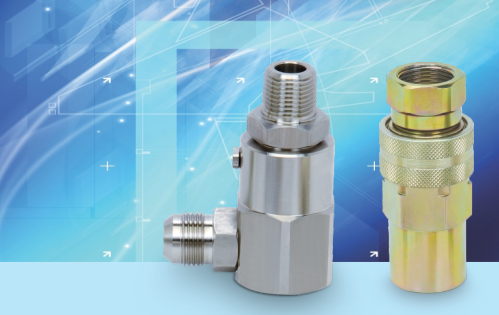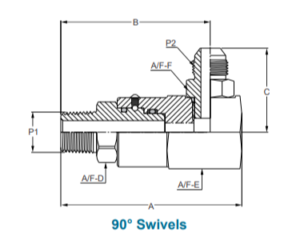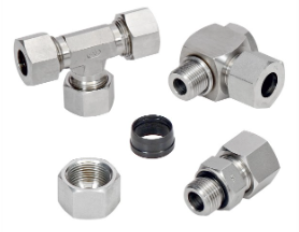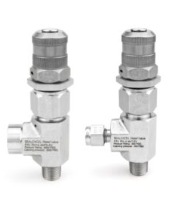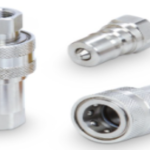
DIY Don’t Cry: 5 Easy Hydraulic Pipe Fittings Hacks That Will Save You Time (and Tears)
January 10, 2024
A Comprehensive Overview on Hydraulic Fittings
January 30, 2024It is easy to see the world of hydraulics as a maze of valves, pumps, and hoses. Don’t be worried, brave engineers and do-it-yourselfers! In this intricate system, one important component that is frequently disregarded is the simple hydraulic coupling. The work gets done, the pistons pump, and the fluid flows because of these unsung heroes. But picking among them the best Hydraulic Connector Types can feel like navigating a complex maze because there are so many sorts available. You need not worry, as this guide will act as your personal Ariadne’s thread, guiding you through the maze of hydraulic connectors and unlocking their mysteries.
First Things First: What is a Hydraulic Connector?
Imagine a high-pressure roadway constructed entirely of metal tubes rather than concrete. In essence, a hydraulic system is that. Additionally, connectors are necessary for a hydraulic connector types in order to link pipes, hoses, and other parts, just as junctions and bridges are necessary for any good highway. These connectors are essential to having a reliable system that can withstand the high pressure and flow of hydraulic fluid without leaking.
Unraveling the Maze: A Compendium of Connector Types
Let’s now explore the rich and broad world of these unsung heroes:
- Connectors with threads: The tried-and-true of the connection industry are these workhorses. Consider them the reliable fasteners that keep your furniture together. They provide a safe, dependable connection and are available in a variety of types, including NPT and BSP. They are perfect for low- to medium-pressure applications.
- Flanged Connectors: visualise a gasket positioned between two solid plates that are welded together. That is what a flanged connector is all about. They perform exceptionally well under pressure, offering a strong connection that can handle even the most stressful hydraulic systems.
- Quick-Connect and Disconnect Couplings: Do you need to quickly connect and disconnect? Put in the couplings for a simple connect and disconnect. These clever devices are ideal for applications where time is of the essence because they can be quickly and easily assembled and disassembled without the need for tools.
- Push-pull connectors: Push-pull connectors are the epitome of simplicity. All it takes to make or break the connection is a quick push or pull. They are perfect for maintenance and temporary setups because of their simplicity of usage.
- Brazed and Welded Connectors: Brazed and welded connectors are the best option for durability under extreme pressure and permanence. These fuse together with the hoses or tubes to form an almost unbreakable, unwavering bond.
Beyond the Fundamentals: Selecting the Appropriate Connector
Finding the ideal fit for your unique requirements is more important when choosing a connector than simply considering type. Take into account these elements:
- Apply pressure: The pressure ratings of different connectors vary. Select one that can withstand the highest pressure your system is likely to encounter.
- Temperature: It’s important to know what your system’s operational temperature range is. Certain connectors work best in very hot conditions, while others work best in colder settings.
- Material: Your connectors, hoses, and pipes must be made of appropriate materials. Leaks and corrosion might result from mismatched materials.
- Flow Rate: Connectors with the fewest restrictions are required for high flow rates. Select a design that will not disrupt the hydraulic fluid’s easy flow.
- Application: The requirements for various applications vary. When making your decision, take into account things like required maintenance, ease of assembly, and available space.
Remember: If you’re unsure which connector is ideal for your application, it’s advisable to speak with a hydraulics specialist. They can guide you through the maze and guarantee the safe and efficient operation of your equipment.
Bonus Advice: Never undervalue the importance of preventive maintenance! To prevent leaks and system failures, regularly check your connectors for wear and tear and replace them as soon as necessary.
With this guidebook in front of you, you can go from being a lost wanderer in the maze of Hydraulic Connector Types to being a mastermind. You now possess the expertise to confidently go through the various possibilities and select the ideal fit for your requirements. Now set out, daring adventurer, and take the hydraulic systems world by storm—one connector at a time!
Remember: hydraulic connectors are the unsung heroes that keep the work going and the pressure on, not simply some fancy nuts and bolts. Give them the decency they merit, and your hydraulic system will thank you for it with dependable performance and seamless running. Go forth now and solve the maze!

